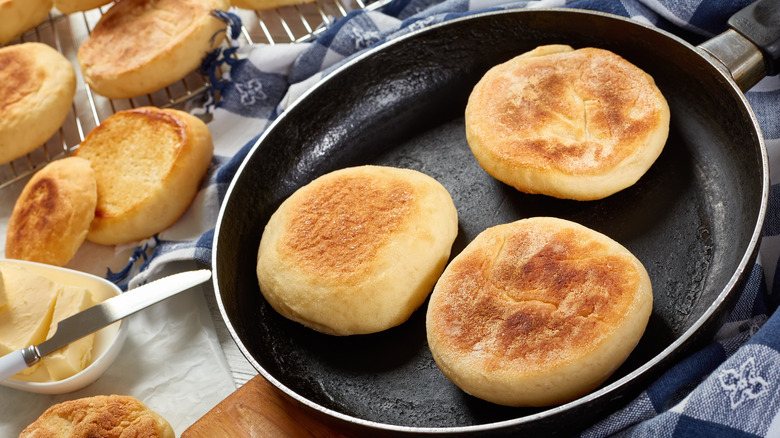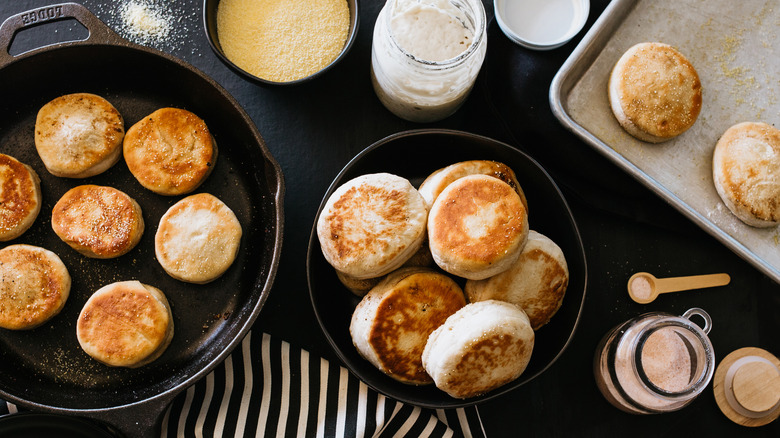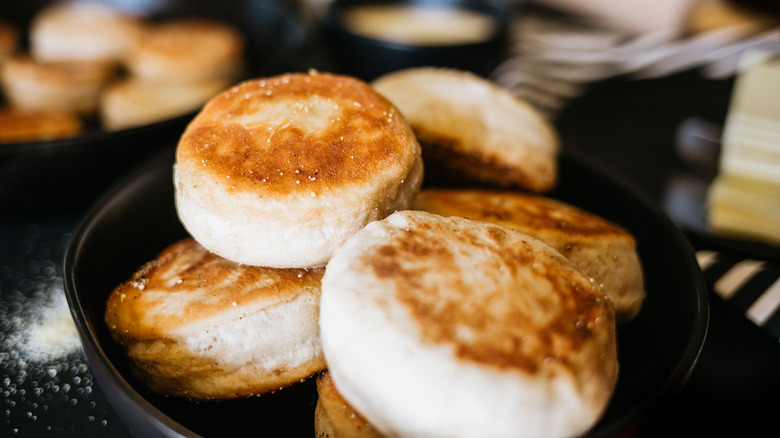The Pan Tip You Need To Make Better English Muffins
There are well over a dozen English muffin brands, but the original comes from none other than the industry leader: Thomas' Breads. As a British immigrant living in the United States, the titular Samuel Bath Thomas created the first English muffin in 1880 when he set out to invent a toast-able crumpet with nooks and crannies aplenty. From the very start, griddle baking was a key step in his top-secret recipe for an impressively tasty breakfast food with a crispy exterior and chewy interior, illustrating just how important pans are to English muffins.
Thomas' Breads still uses that same process to this day, but for those of us not employed there, we're left guessing. Sure, you could go buy English muffins at the store, but what if you want to smear some butter, honey, or jam on (or sandwich cheese, eggs, and meat in between) bread you made yourself? If you do, consider using a cold, dry pan.
How are English muffins typically made?
It's not like chefs have been at a total loss on how to make English muffins. The specifics of individual recipes vary, but for over a century now, they have usually followed a similar pattern. Pan technique aside, this process is a dependable one.
Quite a bit of time is required to make English muffins from scratch. First, you combine the ingredients to create dough. Second, you knead and grease the dough with oil and then proof it for an hour. Afterward, you dust the dough in flour, cut out the muffins, and place them on a tray, leaving them there to proof once again. Then you preheat a heavy-bottom pan to medium-low before riddling the dough on it (some recipes also call for transferring the dough into a hot oven to finish the job). Lastly, you pry the muffins open with a fork.
Yuo can also transfer the dough onto a cold, dry pan
Griddling on a medium-low-heat pan might not be taking full advantage of all culinary possibilities. Claire Saffitz, a recipe maker, food show host, and cookbook author — trained at Harvard and École Grégoire Ferrandi — took to YouTube to show home chefs a particularly interesting trick.
In the video, Saffitz points out some general tips: either a griddle or a skillet works, and it doesn't need to specifically be an iron-cast griddle. Then for the tip — she transfers her dough onto a cold, dry pan instead of one preheated to medium-low. Saffitz also recommends using low heat once the process begins and rotating the pan itself (not the muffins) as time passes in order to avoid an undercooked center, spotty browning, or flat rise. She also streamlines things by eschewing the hot oven bake entirely. Voila!


